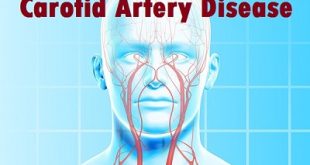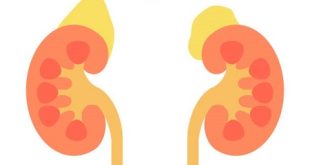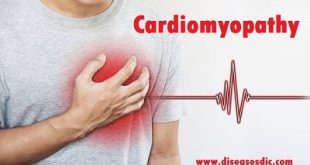Overview Caudal Regression Syndrome (CRS) is a rare congenital disorder that primarily affects the development of the lower half of the body, including the lower spine and limbs. This condition occurs during fetal development when the caudal, or lower, part of the embryo fails to form properly. As a result, …
Read More »Cutis Verticis Gyrata (CVG) – Classification, Causes and Treatment
Definition Cutis verticis gyrata (CVG) refers to deep folds on the scalp that look similar to the folds of the brain. It occurs more commonly in males, and most commonly develops after puberty, but before age 30. It may occur alone (isolated CVG) or in association with a variety of underlying …
Read More »Carotid Artery Disease – Symptoms, Risk Factors and Prevention
Definition Carotid Artery Disease or Carotid artery stenosis is a condition that happens when your carotid artery, the large artery on either side of your neck, becomes blocked. The blockage is made up of a substance called plaque (fatty cholesterol deposits). When plaque blocks the normal flow of blood through …
Read More »Castleman Disease (CD) – Pathophysiology, Types and Prevention
What is Castleman Disease? Castleman disease (CD) describes a group of rare disorders that involve enlarged lymph nodes and a broad range of inflammatory symptoms and laboratory abnormalities. The lymph nodes, and the cells that reside in them (lymphocytes and stromal cells), are an integral part of our immune system …
Read More »Colles Fracture – Types, Complications and Treatment
Definition Colles Fracture is a complete fracture of the radius bone of the forearm close to the wrist resulting in an upward (posterior) displacement of the radius and obvious deformity. It is commonly called a “broken wrist” although the distal radius is the location of the fracture, not the carpal bones of …
Read More »Conn’s Syndrome – Types, Complications and Risk factors
Definition Conn’s Syndrome means the adrenal glands produce too much of the steroid hormone aldosterone, which helps regulate sodium and potassium excretion. The adrenal glands are two small triangular glands, one on top of each kidney. This condition, also called primary aldosteronism, results from overproduction of aldosterone by one or …
Read More »Cardiomyopathy – Types, Causes and Prevention
Definition Cardiomyopathy is a general term that refers to diseases of the heart muscle. In cardiomyopathy, the heart muscle becomes enlarged, thick or tough, and cannot beat as well as it should. The heart is less able to pump blood effectively and prone to heart failure, heart valve problems, and …
Read More »Commotio Cordis – Pathophysiology, Causes and Prevention
What is Commotio Cordis? Commotio cordis can happen to a person with a normal heart and occurs when a blunt trauma to a person’s chest often while playing sports leads to cardiac arrest where their heart stops pumping blood. Commotio cordis typically occurs in children and adolescents. The impact needs …
Read More » Diseases Treatments Dictionary This is complete solution to read all diseases treatments Which covers Prevention, Causes, Symptoms, Medical Terms, Drugs, Prescription, Natural Remedies with cures and Treatments. Most of the common diseases were listed in names, split with categories.
Diseases Treatments Dictionary This is complete solution to read all diseases treatments Which covers Prevention, Causes, Symptoms, Medical Terms, Drugs, Prescription, Natural Remedies with cures and Treatments. Most of the common diseases were listed in names, split with categories.








